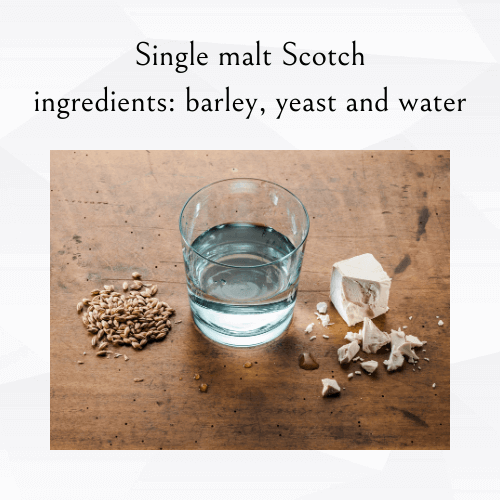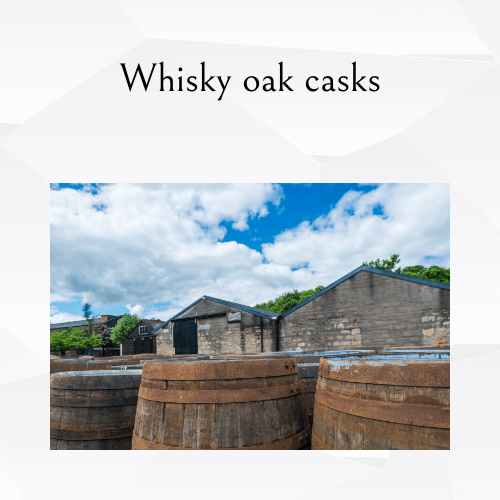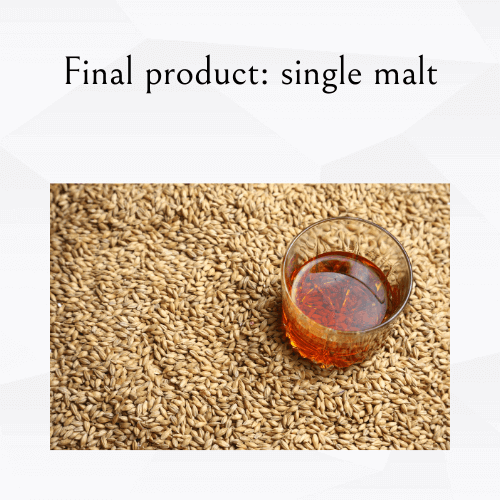Table of Contents The Charlie Chaplin Cocktail is a delicate fusion of three key ingredients: apricot brandy, sloe gin, and...
Published: 01/01/24

Scotch whisky, renowned for its rich heritage and complex flavors, is a spirit that has captivated the palates of connoisseurs for centuries. Within the realm of Scotch whisky, two distinct categories stand out prominently: single malt and blended Scotch. Each category has its unique characteristics, production processes, and devotees.
The foundation of any good Scotch lies in its ingredients. Single malt Scotch is crafted exclusively from malted barley, yeast, and water, adhering to a stringent set of regulations. The use of other grains is prohibited, and the barley must be malted at a single distillery. This exclusive use of malted barley imparts a robust and characteristically complex flavor profile to single malt Scotch.
On the other hand, blended Scotch comprises a mixture of malt whiskies and grain whiskies. Grain whiskies are distilled from a combination of malted and unmalted barley, along with other grains such as corn or wheat. The addition of grain whisky provides a smoother and more approachable quality to blended Scotch, making it an appealing choice for a broader audience.

The production processes for single malt and blended Scotch vary significantly, influencing the final product’s taste and texture. Single malt Scotch is distilled at a single distillery using pot stills, traditional copper vessels that contribute to the whisky’s distinct character. The process involves malting, mashing, fermentation, distillation, and aging in oak casks. The result is a whisky that reflects the unique qualities of the distillery’s location, water source, and production methods.
In contrast, blended Scotch undergoes a more intricate production process. It begins with the creation of individual malt and grain whiskies, each distilled at separate distilleries. Master blenders then meticulously select and combine these whiskies to achieve a balanced flavor profile. The blending process is an art, requiring expertise and a keen understanding of the characteristics of each whisky involved. This meticulous craftsmanship allows blended Scotch to cater to a wide range of tastes, providing a consistent and well-rounded experience.

The maturation period plays a crucial role in shaping the character of Scotch whisky. Single malt Scotch typically undergoes a more extended aging process compared to blended Scotch. The aging period for single malt whisky must be a minimum 3-year period. It is often specified on the bottle label, indicating the minimum number of years the spirit has spent maturing in oak casks.
Blended Scotch, on the other hand, benefits from the flexibility of using whiskies of varying ages. The master blender’s skill lies in blending the flavors of whiskies with different maturation periods, creating a final product that is greater than the sum of its parts. While some components may be older to impart depth and complexity, others may be younger, contributing freshness and vibrancy.

The flavor profiles of single malt and blended Scotch whiskies are distinctive, attracting different segments of whisky enthusiasts. Single malt Scotch is known for its bold and concentrated flavors. Depending on the region of production, single malts can range from the peaty and smoky whiskies of Islay to the fruity and floral expressions of the Highlands. The terroir, or the environmental factors influencing the barley and water, contributes to the unique regional characteristics of single malts.
In contrast, blended Scotch is revered for its versatility. The blending process allows for a combination of different flavor profiles, resulting in a well-balanced and approachable whisky. Blended Scotch often exhibits a smoother texture with notes of caramel, vanilla, and a subtle hint of peat, appealing to a broader audience that may find the more robust flavors of single malts challenging.
Both single malt and blended Scotch whiskies hold distinct places in the rich tapestry of Scottish culture and tradition. Single malts are often associated with the individual character of a specific distillery and the craftsmanship of the master distiller. Many distilleries pride themselves on the centuries-old techniques passed down through generations, contributing to the unique identity of their single malt expressions.
Blended Scotch, on the other hand, has played a pivotal role in democratizing whisky consumption. Brands like Johnnie Walker and Chivas Regal have become global ambassadors for Scotch whisky, introducing it to a wide audience. The art of blending allows for consistency across batches, creating a reliable product that maintains a consistent flavor profile over time.

Our Team
Hi, we’re mixdrinkipedia team. Welcome to our cocktail corner of the web, crafted by our dedicated team, passionate about everything that makes mixology magical. We’re a group of enthusiasts and professionals, blending our diverse skills and backgrounds to create a space where the art of cocktails is celebrated from intricate recipes and deep dives into the history of cocktails to reviews on the latest in bar tools. Join us as we explore the art and science of mixology, one sip at a time.
Newest Recipes
Table of Contents The Charlie Chaplin Cocktail is a delicate fusion of three key ingredients: apricot brandy, sloe gin, and...
Facebook Print Email WhatsApp Table of Contents The Bensonhurst cocktail is a clever riff on the classic Brooklyn, which includes...
Facebook Print Email WhatsApp Published: 02/20/24 Table of Contents The Suffering Bastard is a blend of cognac, gin, fresh lime...
Facebook Print Email WhatsApp Table of Contents French cocktails have long held a reputation for their sophistication and timeless appeal,...
MixDrinkiPedia.com is a participant in the Amazon.com Services LLC Associates Program. As an Amazon Associate we earn from qualifying purchases. Amazon and the Amazon logo are trademarks of Amazon.com, Inc. or its affiliates.